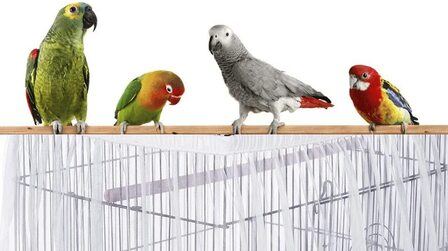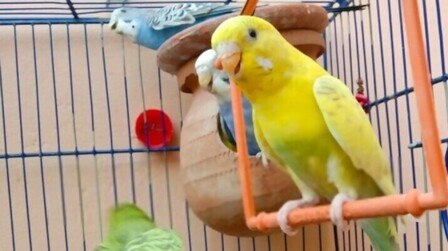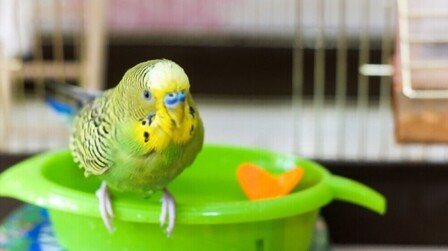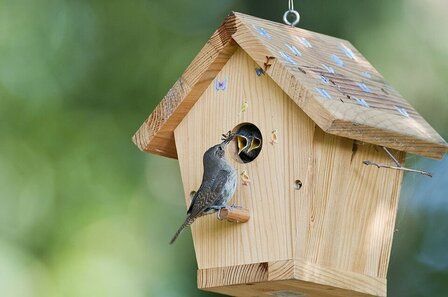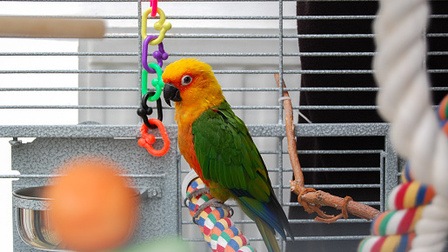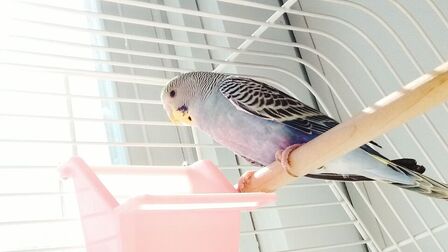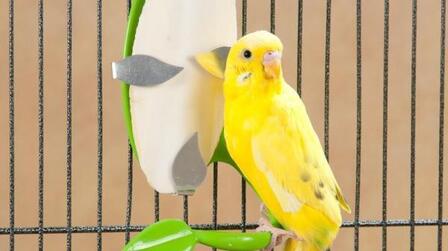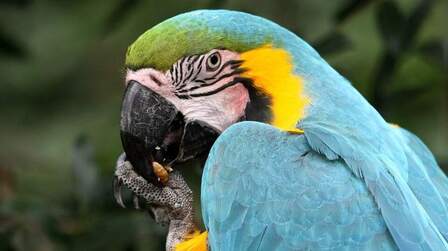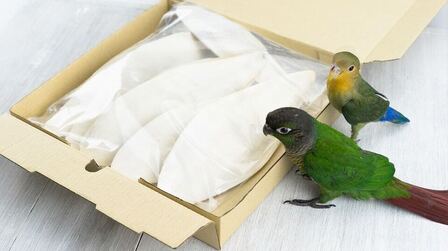The installation of the lighting system carries many benefits for ornamental birds. You can stimulate your pet's birdcage with natural sunlight, and with birds kept indoors, this will attract more birds to come.
However, many birds do not receive proper or adequate lighting. This significantly affects behavior and overall health, reproduction, hormones, feather vibrancy and structure, sleep cycles, and mood. All are affected by the light cycle (photoperiod). How to choose light for a bird cage, let's find out below.
Birds like the African Gray Parrot have low calcium levels (hypocalcemia) if they do not have enough vitamin D due to inadequate exposure to full-spectrum light.
Insufficient lighting can lead to behavioral problems such as feather picking, biting, and screaming.
Does not spawn if there is a lack of light.
1. Time for the lighting of the bird
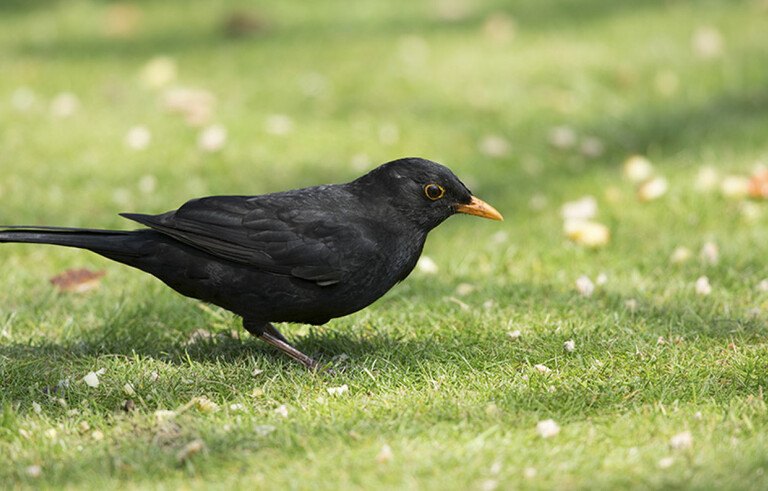
Make sure to give your pet 10-12 hours of light.
If during times of favorable temperatures (morning is best when it's not too hot and insects aren't many), take your bird outside in the cage. Make sure the cage doors are securely latched. Leave it outside unattended and make sure the bird has access to shade.
Where if your pet can't go outside, provide full-spectrum lighting during and during hours. Fluorescent bulbs do not produce the proper light spectrum. Check out avian-light-part.
Birds are breeding, gradually increasing day length from 10 hours daily to about 16 hours daily.
2. Positioning the light for the bird
Always remember that the bird's light should always be installed above the pet parrot's head. Letting a light source shine on the wall of the cage into the eye is an unnatural form of illumination. This will increase the risk of glare and damage related to glare.
It can be even more difficult with lamps that produce UV rays because of scarring on the eyes and chronic injury.
Keep the cage away from direct sunlight through the windows. Birds like to look outside, but UV rays don't usually pass through them, unlike infrared light.
Putting your pet's cage too close to a window can lead to heatstroke, which can be fatal.
3. Replacing bird lights

For specialized birds, the light quality is required to be changed every year as the phosphors make the balance of UV rays wear out, which in turn prevents the phosphors from producing visible light.
But the bird lamp may remain lit after this time, its UV component will decrease significantly, usually 30% of the lamp's original wattage.
When used to provide birds with 8-12 hours of illumination, the lights will need to be changed every 12 months.
4. Importance of positioning

You should remember that bird lights should always and should only be installed above the bird's head. If the light source hits the wall of the cage, it is an unnatural form of illumination. This increases the risk of glare-related discomfort and damage.
If it is more serious, it will cause scarring in the eye and long-term injury.
In particular, the barn must avoid direct sunlight through the window. Birds love to look outside, but only partly because UV rays don't usually pass through the glass, unlike infrared light.
Or placing the bird too close to a window greatly increases the risk of heatstroke, which is potentially fatal.
5. UV safety
The lamps reproduce the soft natural sunlight in the early morning. Usually, it occurs at 25-30cm (10-12ins) from the lamp.
Do not try to expose yourself to lights for too long, unless they are not tanning lamps. Only sit outside in direct sunlight and at least 45cm (18ins) or more away.
The farther the light travels, the less energy is available over a small area, at distances of 60cm (24ins) or more it is not possible to measure the UV output from a specialized bird lamp.
Turn off the lights for the bird before cleaning the cage or coming into contact with people. If using certain medications can make you sensitive to sunlight, advise your doctor before using these lights.
Make sure birds do not reach electrical cables, as parrots can bite through them with powerful bills.
6. Spectrum(CRI-Color Rendering Index)
This visual superpower gives birds the ability to see billions of colors, while human color perception maxes out at around seven million.
Thereby, making birds much more sensitive to differences in the color spectrum of light.
Furthermore, the accuracy of the color spectrum of light is usually expressed by the Color Rendering Index (CRI). A great CRI is 100, which reflects the colors of midday sunlight.
Most indoor lighting always has a CRI. Even full-spectrum lamps can be rated as low as 85 CRI.
Some people mistakenly believe that sunlight coming through a window has a lot of CRI, but large windows can make birds feel exposed, adding to stress levels. Windows can also lead to overheating if left in direct sunlight for too long.
Currently, many brands produce specialty fluorescent bulbs with ratings of 95 CRI or higher. Tends to produce the most accurate colors and has the longest lifespan.
8. Color temperature

The process ranks temperatures according to the progression of colors hot objects exhibit when they begin to glow due to heat. When something heats up, it first emits a dull red and then orange.
This is also an example of a lower color temperature. If you see an object heat up, its light becomes orange, then yellow, and finally white and blue like the flame on a gas stove. Thus, "cooler" light is red (long wavelength), and "hotter" light is blue (short wavelength).
For light, color temperature is measured on the Kelvin (K) temperature scale. You'll find a "4700 K" or "6000 K" rating, "K" stands for "Kelvin". This refers to the hot/cold balance of colors in the spectrum of light.
The birds do best under the sun's color temperature of 5000 K in tropical latitudes. This low color temperature (redder) results in breeding behavior, while a high color temperature (bluer) causes more stress and hair destruction. For tropical birds, look for a light with a temperature of at least 5000 K and no more than 5700 K.
Furthermore, special fluorescent tubes like the Philips TL-950, which give a good color temperature of 5000 K and have a CRI rating of 98, are a great choice for basic supplemental lighting for birds.
9. Proper lighting positioning

This is something to consider later but also plays an important role when setting up lights for birds. Placing spotlights directly on the cage can lead to stress as the bird adjusts to a large new object near the bird.
But placing the lights too close to the cage can lead to differences in light levels in different parts of the cage. Since luminance is a measure of the amount of light at a given location; reduced to the square of the distance from the light source.
So when you move the light more than 2 feet away from the birdcage, the brightness will decrease by 4 times. Or if you move the light closer to 3 feet, the brightness increases 9 times. Therefore, the lights should not be placed too close or too far from the cage.
In case, if the lamp is placed too low, many benefits of proper lighting will be lost. Food plates will be in the dark, and toys, and mates in the cage. In addition, light from below or from the side can limit a bird's natural ability to block sunlight, reduce vision, and cause stress.
Finally, to increase the bird's visibility, place the bird's light above the cage and off the top. This provides good lighting.
Conclusion
These lights represent a major advance in bird care, the system has been designed with safety as the overwhelming priority.
To sum up, we always focus on the advantages of providing light in this way far outweigh any risk, especially as this should only become a concern if the technology is improperly used.


